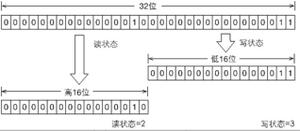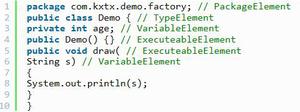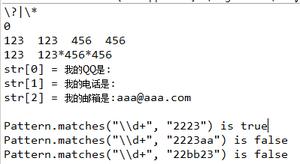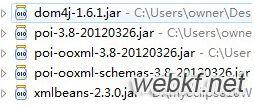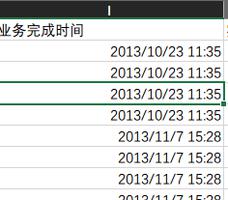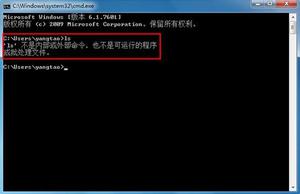react如何实现一个密码强度检测器详解
前言
密码强度文件校验器; 注册帐号的时候我们需要对用户当前的密码强度进行一个评估,这个过程我们需要做一个检测器,最好写的灵活点,这样方便产品修改规则。
先看下效果吧~~ 下面是截图对应的状态
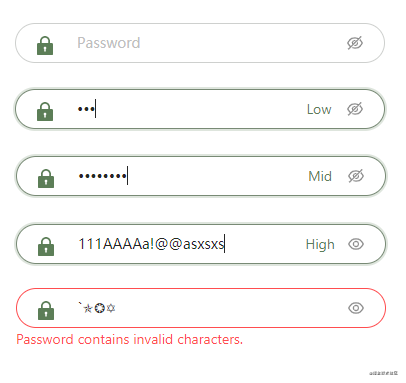
使用
1 参数传递
const PasswordForce = passwordForce({ inputValue, className: 'password-force', });
2 使用
<PasswordForce.View />
3 校验
检测是否超出字符PasswordForce.invaildWord
实现例子
我们配置antd实现下密码输入框上面绑定一个提示器吧
1,2都是不需要改的,但是实际我们需要监听input的值然后设置值。于是我们可以定义一个监听修改value的函数
const [inputValue, setInputValue] = useState('');
const passwordChange = (value: string) => {
setInputValue(value);
};
const onPasswordInput = (e: any) => {
passwordChange(e?.target?.value || '');
};
然后绑定即可,绑定好了我们就可以正常显示了,但是,如果输入了非法字符,这时候我们需要通过拦截器拦截。
<Form.Item
...
rules={[
{
required: true,
message: 'Password not empty',
},
({ getFieldValue }) => ({
validator(_, value) {
passwordChange(value);
if (PasswordForce.invaildWord) {
return Promise.reject(
new Error('Password contains invalid characters.'),
);
}
return Promise.resolve();
},
}),
]}
...
好了,使用片结束,我们实现下吧。
组件编写
编写组件
import {
getRuleMatchResult,
IpasswordForce,
IpasswordRule,
isMatchForceResultConfig,
matchResultConfig,
passwordBreakKey,
} from '@/utils/passwordStrengthChecker';
import React, { CSSProperties } from 'react';
import { useEffect } from 'react';
import { useState } from 'react';
import styled from 'styled-components';
interface props {
inputValue: string;
color?: string;
style?: CSSProperties;
className?: string;
customRule?: IpasswordRule[];
}
enum ForceMap {
high = 'High',
middle = 'Mid',
low = 'Low',
}
const boolNumSum = (list: boolean[]) =>
list.reduce<number>(
(previousValue, currentValue) =>
currentValue ? previousValue + 1 : previousValue,
0,
);
const passwordForce: (props: props) => {
View: React.FC;
invaildWord: boolean;
force: IpasswordForce;
} = ({ inputValue, style = {}, className, customRule = [] }) => {
const [force, setforce] = useState<IpasswordForce>(false);
const [invaildWord, setIsInvaildWord] = useState(false);
const inputValueLen = inputValue?.length || 0;
const setData = () => {
setforce(false);
const isFirstWordUp = inputValue[0] === inputValue[0].toLocaleUpperCase();
const ruleRsult = getRuleMatchResult(customRule, inputValue, undefined, '');
const matchNum = boolNumSum(ruleRsult.list.map((e) => e[passwordBreakKey]));
const matchResultConfig: matchResultConfig[] = [
{ min: 0, max: 32, matchNum: 1, value: 'low' },
{ min: 7, max: 32, matchNum: 2, value: 'middle' },
{ min: 7, max: 32, matchNum: 3, value: 'middle' },
{ min: 15, max: 32, matchNum: 3, value: 'high', need: isFirstWordUp },
];
setIsInvaildWord(ruleRsult.invaildWord);
matchResultConfig.forEach((config) => {
isMatchForceResultConfig(config, matchNum, inputValueLen) &&
setforce(config.value);
});
};
useEffect(() => {
inputValue ? setData() : setforce(false);
}, [inputValue]);
return {
View: () =>
force ? (
<PasswordForceWrap {...{ style, className }}>
{ForceMap[force]}
</PasswordForceWrap>
) : (
<></>
),
invaildWord,
force,
};
};
export default passwordForce;
const PasswordForceWrap = styled.span`
color: ${({ color }) => color ?? '#000'};
`;
数据结构解析
- list 规则的集合,每一个规则都有是否匹配到和规则名及已规则数据本身。
- map 就是方便直接获取对应规则的数据。
- matchCount 就是匹配到的字符数
- invaildWord 可以根据这个来判断是否有非法字符(超过规则本身规定的字符)
流程解析
这个其实就两个流程
- 根据输入的值和规则获取处理后的数据,获得的数据结构如上面所示。
- 然后再编写具体符合业务需求的config数据交给isMatchForceResultConfig函数去匹配设置强度
嗯。 业务代码差不多就这么多了。 然后里面关于依赖那就是属于基本不会改动的代码,基于下面底层的文件,在业务代码我们可以配置出很复杂的校验器,这部分代码我们可以在其他文件上实现。
底层代码解析
让我们来康康吧。
下面是纯ts代码,可以运行任意框架哦。
passwordStrengthChecker.ts
import { numberList, specialList, wordList } from './constants';
type map = <U, T>(opstion: {
array: U[];
range: number;
matchList: T[];
tokenMap: (updateItem: T, token: U, index: number) => T;
breakKey?: string;
arrayMap?: (item: U, index: number) => void;
}) => T[];
/**
* match array and set
*/
export const setArrayMatch: map = ({
array,
range,
matchList,
breakKey,
tokenMap,
arrayMap,
}) => {
const tokenLen = array.length;
for (let tokenIndex = tokenLen - 1; tokenIndex >= 0; tokenIndex--) {
const arrayToken = array[tokenIndex];
arrayMap && arrayMap(arrayToken, tokenIndex);
for (let findIndex = range - 1; findIndex >= 0; findIndex--) {
matchList = matchList.map((item) =>
tokenMap(item, arrayToken, findIndex),
);
}
if (breakKey && !matchList.map((e) => (e as any)[breakKey]).includes(false))
break;
}
return matchList;
};
export const passwordBreakKey = 'isMatch';
export type IpasswordRule = {
list: string[];
isMatch: boolean;
name: string;
};
export const defaultPasswordRuleList = [
{ name: 'special', list: specialList },
{ name: 'num', list: numberList },
{ name: 'word', list: wordList },
];
type PickValue<T, K extends keyof T> = T[K];
export const getRuleMatchResult: (
customRule: IpasswordRule[],
inputValue: string,
disableDefaultRule?: boolean,
breakKey?: string,
) => {
list: IpasswordRule[];
map: Map<PickValue<IpasswordRule, 'name'>, boolean>;
matchCount: number;
invaildWord: boolean;
} = (customRule, inputValue, disableDefaultRule = true, breakKey) => {
let ruleList = [
...(disableDefaultRule ? defaultPasswordRuleList : []),
...customRule,
].map((item) => ({ ...item, [passwordBreakKey]: false }));
const range = Math.max(...ruleList.map((ruleItem) => ruleItem.list.length));
let matchCount = 0;
ruleList = setArrayMatch<string, IpasswordRule>({
array: inputValue.split(''),
range,
matchList: ruleList,
// not breakKey full match
breakKey: breakKey === void 0 ? passwordBreakKey : breakKey,
tokenMap: (ruleItem, inputToken, findIndex) => {
const match = ruleItem?.list[findIndex] === inputToken;
if (match) {
matchCount++;
return { ...ruleItem, isMatch: true };
}
return ruleItem;
},
});
return {
list: ruleList,
map: new Map(ruleList.map((e) => [e.name, e[passwordBreakKey]])),
matchCount,
// 想要获取这个值,必须breakKey设置为空字符,如果提前退出会导致提前中止条件
// To get this value, breakkey must be set to null string
invaildWord: matchCount !== inputValue.length,
};
};
export const isMatchForceResultConfig = (
config: matchResultConfig,
matchNum: number,
inputValueLen: number,
) => {
return (
matchNum === config.matchNum &&
inputValueLen >= config.min &&
inputValueLen <= config.max &&
(config.need !== undefined ? config.need : true)
);
};
export type matchResultConfig = {
min: number;
max: number;
matchNum: number;
value: IpasswordForce;
need?: boolean;
back?: IpasswordForce;
};
export type IpasswordForce = false | 'high' | 'middle' | 'low';
流程就是合并规则,一个是默认规则一个是自定义规则,如果自定义规则,那么就会覆盖默认规则。
从规则中,寻找规则数量最长的规则,因为等下我们遍历的时候可以合并所有的规则,不管多少规则,其实遍历数是区别不大的。
遍历函数是个单独的高阶函数,可以自定义处理内部的逻辑,这时候,我们匹配到了之后对应的规则,激活对应规则的属性,并累计匹配到的字符。
最后正常全部匹配到了就应该中止遍历,但是有一个情况是不能中止的,那就是需要判断是否有非法字符。
最后这个函数把处理过的数据丢给上层组件,流程就是这样
在数据抛出的过程中,有些场景可能需要对对应规则的数据进行特殊处理,但是如果是array结构就很不方便,于是抛出的数据应该分为list和map类型,上层应用想要获取对应规则的情况可以map.get(规则名称)来操作
constants.ts
export const specialList = ["~", "!", "@", "#", "$", "%", "^", "&", "*", "(", ")", "_", "=", "-", "/", ",", ".", "?", "<", ">", ";", ":", "[", "]", "{", "}", "|", "\\"];
export const numberList = ['1', '2', '3', '4', '5', '6', '7', '8', '9', '0'];
export const wordList = ["q", "a", "z", "w", "s", "x", "e", "d", "c", "r", "f", "v", "t", "g", "b", "y", "h", "n", "u", "j", "m", "i", "k", "o", "l", "p", "Q", "A", "Z", "W", "S", "X", "E", "D", "C", "R", "F", "V", "T", "G", "B", "Y", "H", "N", "U", "J", "M", "I", "K", "O", "L", "P"];
其他
很多人可能会有疑问,一个代码检测器有必要搞这么复杂吗,直接正则不好吗。其实从实用角度来说,确实正则更方便点,但是有时候我们不想要循规蹈矩,或者想要手动编码的快感,或者要从无聊中代码获得更多的可玩性等,于是编写一个看起来挺复杂的代码,不过把底层的封装住,然后保留灵活性,在业务层里面尽量简单点,其实也不是不可以试试的,但是也会在review的时候被怼,各位看官拷贝请注意哈,时间紧迫或者编码能力不强的不建议使用本代码,出问题本人概不负责。
总结
到此这篇关于react如何实现一个密码强度检测器的文章就介绍到这了,更多相关react密码强度检测器内容请搜索以前的文章或继续浏览下面的相关文章希望大家以后多多支持!
以上是 react如何实现一个密码强度检测器详解 的全部内容, 来源链接: utcz.com/p/220919.html

